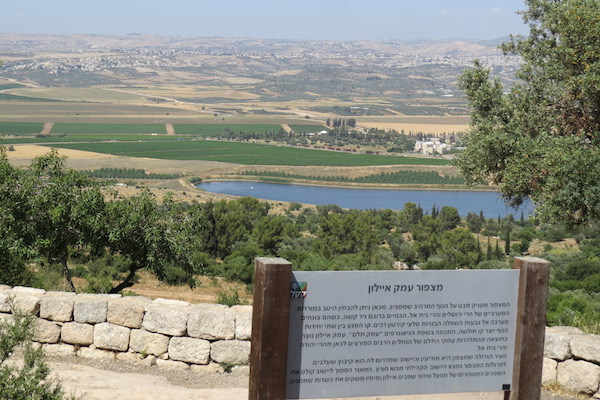Israeli signs in the West Bank not only ignore destroyed Palestinian villages, they also erase those in plain sight.
By Umar al-Ghubari
The destruction and emptying of the Latrun villages took place 49 years ago this month. The Israeli army had occupied Imwas, Yalo and Beit Nuba on June 5, 1967, expelled the residents of all three villages to the Ramallah district and prevented them from returning after the war, which lasted only six days. Bulldozers and soldiers began demolishing the homes, and razed the three villages. The State of Israel erased the names of the villages from its maps, and of course from traffic signs, as was its practice since 1948.
Years later, the Jewish National Fund (JNF) created “Canada Park” on top of the Latrun villages. There are many signs up inside the park, but none them mentions the names of those villages — except for one, which Israeli organization Zochrot compelled the JNF to erect to avoid legal proceedings. About a year ago the JNF put up new signs throughout the park, which erase Palestinian-Arab history altogether. It goes without saying that the entire park is located in an area occupied in 1967, that is, in the West Bank, but not one sign mentions this.
Erasing any textual remnant of the Palestinians is a familiar means of also eradicating them from the Israeli collective consciousness. Signs have the power to shape knowledge, to make an imprint on one’s awareness, to consolidate the name and identity of a place. The sign controls the kind of information that reaches the public, and the kind made inaccessible.
In the Palestinian context, the information and names conveyed in Israeli signs are of critical significance. One of the signs in Canada Park demonstrates that in addition to the past, the present reality can also be erased from the text and from public awareness. Both are absent from the text, though they straddle the hills across from it. And even if past and present do exist, they do not deserve mention.
To those wishing to better understand what it is to be “transparent,” I recommend visiting a specific hill in Canada Park, inside the occupied, destroyed and ethnically cleansed village of Yalo, to understand the way in which the transparent is made (in)visible, and to witness first-hand the brainwashing and efficiency of this powerful stance.
As mentioned in the heading of the sign there, the JNF decided to name the hill the “Ayalon Valley Lookout.” After a thorough explanation about the topography and geography comes the explanation of the demography: one and a half lines, including the mention of three Jewish settlements: the city of Modi’in, Kibbutz Shaalabim, and Mevo Horon, a communal religious settlement. Incidentally, this comes without mention of the fact that Mevo Horon is located in the West Bank, just like the signpost itself.
Naturally, it is unsurprising that an Israeli sign should fail to mention the Palestinian villages erased in 1948 and replaced with Modi’in, such as al-Burj, Barfiliya, Kharuba, ‘Innaba and Kunayyisa, or the village of Salbit beneath Kibbutz Shaalabim. But failing to mention the Palestinian villages still visible across “the stunning surrounding landscape” is an upgraded form of racist erasure, laced with arrogance and contempt for people’s intelligence.

Standing on the “Ayalon Valley Lookout,” the villages of Beit Sira, Beit Liqya, Kharbatha, Beit Ur al-Fuka, Beit Ur al-Tahta and Safa are in front of your eyes on the opposite mountain range. They are visible even more clearly than are Modi’in and Shaalabim, which you can see only by craning your neck to the north and to the south. The colonizer fails to see the natives, even though they are right there before him. The sign tells you to look at the view, and to fail to see the Palestinian; to see a purely Jewish landscape. Ignore the rest. Or better yet, make it unseen.
A sign is testimony. In this case, it is false testimony. A sign is also a document. Perhaps one day it will make it into an archive, and will be used by researchers. Here is proof, the sign will tell them, that not only were there Jews here, but that they were the only ones, and there was no other man or woman there, except for them.
There is no doubt that the process of Judaizing the space, including the Judaizing of names and knowledge, has been progressing rapidly and aggressively for decades, and continues still. It is a process that correlates with other Zionist modes of occupying land.
The example of the sign in Canada Park is one of diluting Arabic names even inside the West Bank, similarly to the process of occupation, settlement, annexation and forced expulsion of Palestinians in other parts of the territory. In this way the signs serve as a means of occupation, oppression, and erasure. Palestinians come upon these signs and feel helpless, made to understand that they are absent, erased. From a Zionist viewpoint, they are devoid of value and lacking existence.
Umar al Ghubari is group facilitator, a political educator, and he documents and photographs the Palestinian Nakba. Translated from Hebrew by Keren Rubinstein.

